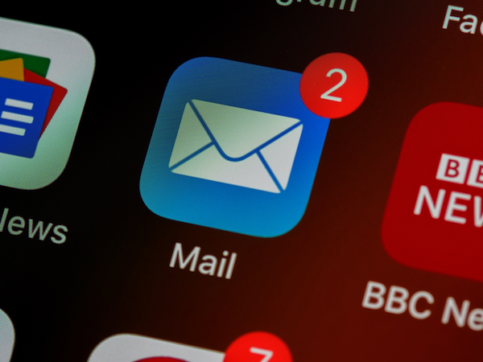How to Create Dynamic Emails with Ease

Don’t be fooled into thinking that creating dynamic emails is a simple task. There are many facets of putting together compelling mailers that are more than just catchy subject lines, interesting text and inserting eye-catching images. With over 4 billion daily email users, it’s no surprise that 4 out of 5 marketers said they’d rather give up social media than email marketing in a 2021 report from Hubspot, Litmus and Wistia.[1] Email offers opportunities that social media can’t compete with in the form of longer message capabilities, more personalization options, comprehensive metrics and increased dwell time/open rates. As more and more organizations realize the powerful potential of email marketing, the importance of making emails dynamic, readable and captivating is increased.
In this article, we’ll go through three ways to take your emails to the next level: incorporating enticing call to action language, striking the right balance of text/images and adding personalized merge tags. These tried-and-true methods will be sure to help your campaign metrics skyrocket and keep your readers coming back for more. Let’s dive in!
Call to Action Copy
Also known as ”CTA”, call to action copy is text that prompts readers to click and engage with a certain part of an email. Drafting dynamic CTA copy is essential for prompting readers to go that extra step and click on email links that direct them back to your website. Where to start with CTA? We’ve rounded up some crowd-pleasing phrases below.
Popular call to action phrases:
- Find out
- Join us
- Subscribe
- Listen in
- Click here
- Take me there
- Get started
- Come along
- What’s next
- Continue
- Don’t miss
It’s important to be clear and direct with CTA. Have you ever heard of the 12 second rule? Simply put, it’s a concept that dictates that readers on average spend about 12 seconds reading an email before navigating away. Call to action text therefore must be snappy and to the point. It’s important to bold CTA phrases, turn them into clickable buttons and float over images to grab attention. Call to action language can be used to direct people to click on certain areas of your email such as subscribe buttons, links to purchase and donation portals.
Get creative with your call to action phrases. Here are some innovative tactics I like to use when drafting mailers:
- Add positivity… “Be happy”, “Say hello”, “Share the love.” If you can craft cheery text with an implied message it helps to add a mood-lifting boost to your mailer.
- Use reverse psychology… “You don’t need this”, “Probs not worth it…” Everyone wants what they can’t have so take advantage of that mindset by drafting cheeky and enticing CTA text.
- Insert hidden objectives… Give a bit of a teaser by offering some information, or a sneak peek which will entice them to click and go further.
- FREE is a magic word that makes any call to action more powerful.
Once you start using CTA phrases, you will notice them everywhere! Marketers need to be direct and guide consumers through a customer journey with ease. Pave the way for your readers to navigate through your email and back to your website with powerful call to action phrases.
Text/Image Ratio
Striking the right balance between text and images within an email is crucial. Too much text and your reader will be immediately put off; too many images and your email may not be readable or searchable. Both text and images have their advantages and disadvantages. Here are some things to look out for when you are considering how to balance out your email communications and keep your mailers enticing…
- Consider that not all inboxes are set up to automatically download images, so beware of using too many graphics within an email. Additionally, make sure that your email makes sense when removing images in case they aren’t downloaded properly.
- Image-heavy emails also aren’t search-friendly. If after reading, one of your subscribers goes to search their inbox using a keyword from your email that was contained within images instead of text, it won’t appear within the keyword search.
- Short and sweet is best. Emails can be clipped if they contain too many images or too much text.
So how do we strike the right balance? Follow the 60/40 rule which dictates that emails should be no more than 60% text and 40% images. This ratio has been tried and tested by marketers worldwide and if adhered to, ensures that emails will be engaging and readable.
Merge Tags
The information that you collect from users when they sign up to your mailer is saved to an audience field and connected to a specific label called a “merge tag.” Merge tags can then be used to insert dynamic and personalized content into your mailers like addressing emails directly to readers using their first names.
Merge tags are particularly great for appeal emails as they can make mailers feel much more intimate and thoughtful. When drafting text for an appeal email, it’s best practice to think about speaking to a friend to help the contents feel more conversational. Merge tags help make mass mailers more exclusive and the more personal you can make the “ask”, the higher the probability of that email resulting in a donor relationship.
Not sure where to start with merge tags? Lots of email platforms have tutorial pages on their websites to demonstrate step by step how to incorporate this feature. If not, there is a plethora of helpful information on YouTube.
In Conclusion
There are lots of elements to consider when putting together an email for yourself or your organization. Creating a dynamic email takes time, consideration, innovation, and the willingness to try new things. Utilize the tactics above to take your mailers to the next level and capture the attention of your readers. Want to learn even more about effective email communication? Check out our recent webinar on the topic by clicking here.
[1] 2021, Not Another State of Marketing Report 2021, https://www.hubspot.com/state-of-marketing
